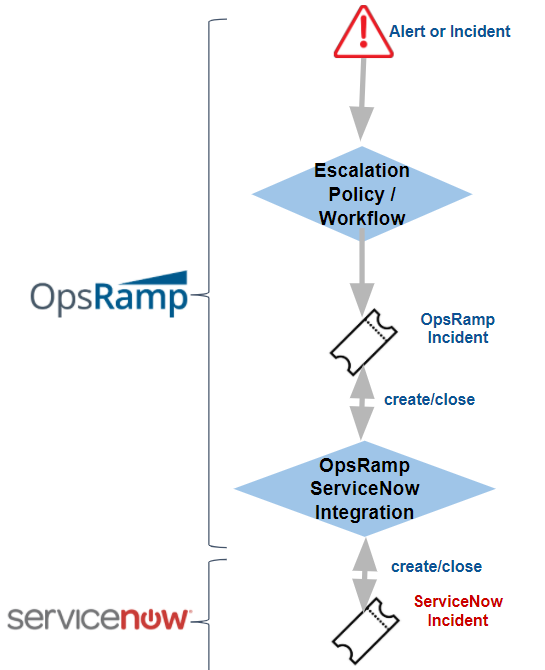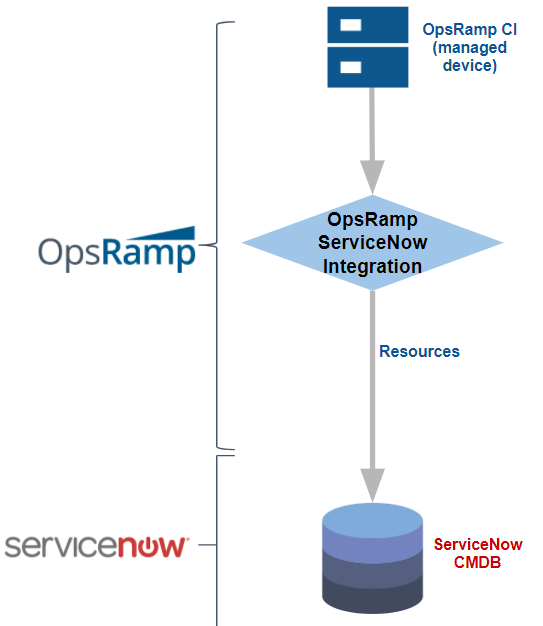ServiceNow is a software platform that supports IT Service Management (ITSM) and helps automate IT Business Management (ITBM). With the integration of OpsRamp and ServiceNow, you can manage incidents and resources.
The following methods are available for integration:
- Standard method from OpsRamp: Configuration is performed manually.
- ServiceNow Store: Configuration is customizable for specific requirements.
The ServiceNow Store method is recommended for ServiceNow version Vancouver (or later). The Standard method is recommended for earlier versions.
Types of integrations
OpsRamp provides two types of integration with ServiceNow. Incident and CMBD.
| Name | Incident Integration | CMDB Integration |
|---|---|---|
| Description | Perform incident management in ServiceNow based on alerts or incidents being generated in OpsRamp. View an OpsRamp incident in ServiceNow (and vice versa). | Discover resources in OpsRamp and populate ServiceNow CMDB. Integrate OpsRamp Resources with third-party Configuration Item (CI) entities. |
| Integration Type | Bidirectional | unidirectional (from OpsRamp) |
| Solutions | - E-bonding between ServiceNow and OpsRamp to enable navigation between systems for troubleshooting. - The criteria to auto generate tickets is user defined using alert escalation policy or workflow. - Closing an incident in ServiceNow or OpsRamp triggers a corresponding close. - Resources are passed (needs CMDB integration) | - Resources are pushed to ServiceNow CMDB based on discovery using the integration. - Out of the box attribute mappings are managed as part of the ServiceNow integration |
| Additional | Every alert is associated with Resource. To detect associated resources, CMDB integer | Does not include some details. Such as, relationships and topology. |
| Doc links | - Using ServiceNow Store - Using Standard Method | - Using ServiceNow Store - Using Standard Method |
| Process Flow | Incident Integration Process | CMDB Integration Process |
The document describes how to complete ServiceNow Integration for inbound and outbound configurations. Inbound or outbound configurations can be created separately.